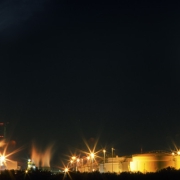Diesel v/ LNG in European trucking – is EURO 6 leveling the field?
Those going for LNG as a fuel were always on the exotic side of life in Europe. Not only were they grappling with infrastructure problems, but they also had to assume a much higher cost of purchasing new gear. EURO 6 might change that.
All those in the game to replace diesel vehicles with LNG-fueled ones are in a dilemma. The LNG gear costs you more on the initial purchase, but fuel costs are lower. So the question always is – will I save more money through the cheaper fuel or if I buy the cheaper diesel model right away? And depending on who you are and how you use your heavy rollers, the answer will be different.
But in the last couple of years, it became tougher and tougher in the US as the price spread between diesel and LNG opened up wide and seems to stay that way and the price premium for LNG trucks began to erode.
In 2014, the EURO 6 emissions standard came into force in the European Union for all new heavy vehicles. This is going to push the limits of what you can put through your exhaust shaft to new lows. Particulate Matter (PM) and Nitrogen Oxide (NOx) have to be removed from the exhaust stream to the extent that running the engine becomes technologically difficult.
Before we look at what the new equation might look like, let’s have a peek at the drivers as this is where you get the real thrills.
So it’s the purchase price of the equipment against the fuel cost. And we have seen that LNG-fueled trucks are more expensive than their diesel brethren which usually means a lot of miles on the cheaper LNG before you start to consider the change.
But with EURO 6, diesel engines have gone a whole lot more complex and all this new technology to filter the dirty stuff has its price, narrowing the gap between diesel trucks and the LNG version.
But why is the LNG truck more expensive in the first place? Is it technologically more complex than diesel? Does it require exotic and expensive materials to be made to function? Nope, twice. It’s a matter of fact that the spark-ignited engine was first run on Natural Gas and only later the use of gasoline was discovered.
Natural gas engines are surprisingly simple. No equipment to spray the fuel into the burning chamber is necessary (it’s a gas already), no soot or other particulates clogging up the pipes, just a stream of cleanly burning methane. Exhaust treatment is super simple too. No filters for PM are necessary, no sulfur to extract, only very low nitrogen oxide concentrations that can be treated with a simple 3-way catalyst.
Diesel engines on the other side are a mess. The fuel is a liquid which means it needs to be mixed with air through some kind of spraying mechanism. Then the by-products of combustion (soot and other particles) clog the engine and piping, slowly suffocating it. Then it gets hairy.
Particle filters take soot and other solids out. Those particle filters need to be changed from time to time as they fill up with stuff. Then multiple layers of catalysts are applied and then there is the new urea mechanism that supposedly washes the NOx out of the exhaust stream. It does so by applying AdBlue, a special urea chemical to the exhaust stream which then binds the NOx and collects the NOx-enriched AdBlue. That means that the truck needs to get its AdBlue fill every once so often which means AdBlue refilling stations, AdBlue discharging stations (you don’t want this stuff in your gutter), and a lot of heavy liquid that has to be dragged around bringing payload down.
I am not a specialist mechanic and anyone knowing more about engines than I do (many, many people) will now correct me if I make a mistake. The fact is that it’s a combustion engine with a chemical plant at the tail end. That cannot be cheap.
Now, the only reason why diesel engines are comparatively cheaper than natural Gas engines is that diesel engines get built-in astronomical numbers and Natural Gas engines in just very small series. If Natural Gas engines were built in a large series as diesel engines, it would be comparatively cheaper as it is the simpler technology. Even with the LNG tank and some cryogenic piping added this would be true as the underlying technology is rather simple as well – just heat exchange.
So, if the diesel engine has lost its price advantage over the Natural Gas engine due to EURO 6 and if there remains some spread, it must wear thin right now. I think it’s safe to say that from next year on both models will compete on an almost equal price basis.
If that becomes true, then let’s compare both engines through their operational cycle.
First, LNG is a cheaper fuel than diesel per 100 km. And those savings are pretty much immediate.
But there is more. EURO 6 diesel engines are maintenance hogs. I was told by an insider that the automobile industry likes EURO 6 because they make lots of money on the very frequent and necessary maintenance. Remember, all that cleaning and filtering is wearing down the machine and then there is all the soot and particulates which have to stay on board now. Someone has to dump the trash sometimes. And that’s not free.
But there is more. AdBlue (the urea solution used to clean out the NOx) needs to be replaced from time to time. This means filling up on it (one liter costs about 0,5 EUROs) and I don’t know where it will be disposed of once it’s used.
EURO 6 engine makers are quick to point out that there is no loss of efficiency as compared to EURO 5 and also that no power is lost due to all that additional technology at the tailpipe. That’s a bit hard to believe we are taking the red pill for the sake of the argument.
Back to the purchase price of the truck – if both diesel EURO 6 and LNG models are going to cost similar piles of hard cash, then the old question of how much fuel one needs to burn per year to earn the price difference back is moot. One starts saving from the first kilometer. But that’s not everything.
The current LNG craze in the US has convinced engine makers to develop new and better natural Gas engines and also to produce them in much bigger numbers. Which ultimately makes their price come down. So if they have already met price-wise, and the diesel monster has a tendency to go up because of increased technological needs and the Natural Gas engine goes down because of the effects of mass production, then diesel is doomed as anyone must go for the switch as otherwise, his competitor will outflank him in the market.
Plus, some people already discuss EURO 7. And the target is CO2.
The only real question then is – who puts the fueling infrastructure in place?


















I had no idea you knew so much about truck engines. Is this your secret hobby? But you make a strong case for LNG in trucking for sure. As to the question of who puts the fueling infrastructure in place, aren’t there a whole bunch of companies with long term supply positions and a desperate need for a market able to pay premium prices in Europe?
You hit the nail right on the head. They just must become a whole lot more realistic as at the current premiums seller want for their truck loaded LNG, its cheaper to liquefy out f the pipeline system. Truck transporting LNG is horribly expensive.
Second tough nut to crack is that in the future BioLNG will be more sexy than normal LNG as the CO2 credits mechanism will be reinfused with new life and LNG just gives you 25% less of it (which is not bad at all) and Liquefied Biogas (LBG) gives you a whopping 100%. Considering how narrow truckers calculations and profits are this will be important.
This is all well and good, but I’m now going to be one of those correcting you.
SCR works by injecting either urea or ammonia into the exhaust stream. Once the mix of urea and exhaust gases passes over a catalyst, the urea reacts with the NOx, breaking it up and binding it into water vapor and nitrogen. There is no need to ‘dispose’ any Adblue or urea because it becomes water and nitrogen.
The SCR system is not particularly maintenance intensive either, nor is it more of an exhaust backpressure generator than any other catalyst unit.
I will not dispute that it is ridiculously expensive. The SCR system for a heavy-duty pickup truck (Ford Super Duty or similar) costs as much as the entire rest of the engine.
Particulate filters are, however, horrible inventions in every way and nothing but problematic.
Wartzilla,
Many thanks for the clarification. As I said, am not an engineer. I just learned something useful but even if that takes one tiny bit of a problem away, it still remains that the whole SCR system adds a huge premium on top of what a diesel engine costs.
Besides, why producing all this nasty stuff if you don’t have to? What I like so much about LNG is that its not a huge shift from diesel as for example e-mobility would be. Its still combustion, its still a liquid refuelling process, is still what we are used to.
And its cleaner and cheaper.
Again, thanks a million for your comment. Loved it.
I also saw in an earlier post you were of the opinion that LNG passenger cars are viable. I’ve always thought this to be completely out of the question due to autorefrigeration and the need to either vent or reliquify.
I am a die-hard diesel man, but I do like LNG as well, and if this was possible I’d be at least somewhat positive to it. It sure beats gasoline.
LNG for passenger cars is much further off as there is no infrastructure to support the erratic needs of private people. Fleets are easier to control and to fuel as they move in vey predictable patterns. Some refuelling points at neuralgic positions will do the trick. With passenger cars its chicken and egg. Thats still some way off. But its still a liquid and offers superior range.
Well, fleet vehicles are constantly running. Passenger vehicles could be parked for a long time. How do you solve boil-off?
Electricity for personal vehicles, LNG for heavy duty.
Sure, but from a personal point of view internal combustion engines are exciting, and electricity is about as exciting as a washing machine.
The 120 motor octane number possessed by pure methane (basically LNG, not so much CNG) makes it all the more interesting.
LNG could also be gasified by injecting it post-turbocharger, instead of using an expensive and unneeded gas train. This would do the double duty of cooling the intake charge.
It’s a very exciting performance fuel. If tanks could be made that made it practical for casual use, I would be thrilled.
I understand what you say. Still, things exciting or not have to meet the test of reality. Many things altough very exciting are not practical or cost effective. Diesel engines are today as timely and suited to what the world needs as steam engines were a hundret years back. It took many decades for steam locomotives to disappear from normal railway operations but with the advent of the internal combustion engine its time was up. LNG’s clean properties make it THE fuel for the coming decades. Is it perfect? Hell no, and what is perfect anyow? But its the best economical and technically proven solution we have so the shift is inevitable.
Not at all. As Lars has said, passenger cars are probably going to be more of an electric solution (or CNG) and heavy duty is LNG. I can see a LNG passenger car if it is used like or as a fleet vehicle. It still would have superior range, superior to CNG and electricity. But the basic assumption that its electricity for small and LNG for big rings absolutely plausible to me.
LNG might in the end never be more than a fad for smaller vehicles. I personally concentrate on the heavy duty segment.
O besides, modern LNG tanks can withstand quite some BOG pressure buildup. You don’t have to move them all the time. But again, the basic argument that BOG is an issue holds true.